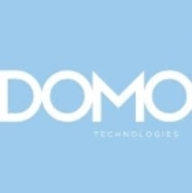

Panorama Necto and Domo compete in the business intelligence software market. Domo often gains favor due to its comprehensive feature set that suits users who seek robust analytics, which can justify its higher cost, whereas Panorama Necto is noted for its competitive pricing and user support.
Features:Panorama Necto provides advanced data visualization, social BI, and collaborative tools allowing users to effortlessly create and share insights. Its extensive support for in-cell infographics aids visual understanding and interactivity. Domo offers strong data integration capabilities with numerous connectors, enabling seamless connection to multiple data sources. Its Magic ETL empowers transformational data processing without direct coding, while the platform also ensures the data democratization process is straightforward for a wide range of user types.
Room for Improvement:Panorama Necto could enhance its support and integration with predictive analytics and big data environments, and some users seek more customization in reporting features. Domo might improve its complex ETL processing time and fine-tune visualization options to rival standard industry aesthetics. Additionally, Domo’s data governance and user filtering processes occasionally require ease-of-use enhancements for novice users.
Ease of Deployment and Customer Service:Panorama Necto is praised for its easy deployment, appealing to organizations with tight implementation timelines. Its customer support is highly rated, providing essential help during onboarding. Domo, although presenting a more intricate deployment due to its vast capabilities, balances this challenge with excellent customer service inclusive of automated user guidance and in-depth knowledge resources available online.
Pricing and ROI:Panorama Necto targets cost-conscious businesses with its budget-friendly pricing structure, delivering solid ROI for businesses emphasizing value. In contrast, Domo demands a heavier initial investment, justified by its feature-rich environment that provides substantial returns for larger enterprises managing complex, varied datasets and seeking comprehensive analytics infrastructure. The decision often hinges on organizational budget limits versus the desire for feature density and long-term value.
If you're actually using Domo at a very limited case and you're being charged $20,000, we've seen ROI there, but once it goes really high, you really need to check your metrics and check your profit.
They were quite professional and in around three to five working days, they had identified where they suspected there was an issue and I was able to fix it.
It's very easy to get technical support from Domo.
Support-wise, they are good.
The fact that you're able to easily identify the pipelines or flows that have errors, and it notifies you when you're building a pipeline where you can run previews and tell where to fix issues, is helpful.
When fetching files larger than 100 MB from SFTP or any other portal, Domo becomes slow due to the heavy file size.
Sigma, which is written for Snowflake, scales more easily than Domo.
In recent years, I haven't had such cases. It's quite stable and I don't have any reservations on its stability.
In terms of overall stability of the platform, it's very stable.
During that time, we faced issues from the project side as Domo was not visible in our portal.
End users require a license to run their own reports and dashboards, which are fairly expensive.
Some technical aspects such as Beast Mode calculation could be improved in Domo, as it would provide more clarity and help in giving insights to clients or customer business team requirements.
One of the areas where we've had frustrations with Domo is the aesthetics. The aesthetics are quite limited compared to other BI tools such as Tableau and Power BI.
Domo's pricing is high compared to other BI tools, and it is costly.
For long-time users, it can become expensive, but the trade-off is access to the entire platform instead of licensing different components separately.
They quoted approximately one dollar per KB.
App Studio is valuable because it allows all the customization we needed; we can decode it, with the view and grid which are all I need, drill-downs, and everything can be done the way I need it.
I have been using it for four years and have been able to extract the information I need from it.
The most valuable feature of Domo is the fact that you can connect multiple inputs and you don't have to have a data warehouse.
| Product | Market Share (%) |
|---|---|
| Domo | 3.9% |
| Panorama Necto | 0.3% |
| Other | 95.8% |

| Company Size | Count |
|---|---|
| Small Business | 16 |
| Midsize Enterprise | 11 |
| Large Enterprise | 20 |
| Company Size | Count |
|---|---|
| Small Business | 13 |
| Midsize Enterprise | 5 |
| Large Enterprise | 32 |
Domo is a cloud-based, mobile-first BI platform that helps companies drive more value from their data by helping organizations better integrate, interpret and use data to drive timely decision making and action across the business. The Domo platform enhances existing data warehouse and BI tools and allows users to build custom apps, automate data pipelines, and make data science accessible for anyone through automated insights that can be shared with internal or external stakeholders.
Find more information on The Business Cloud Here.
We monitor all BI (Business Intelligence) Tools reviews to prevent fraudulent reviews and keep review quality high. We do not post reviews by company employees or direct competitors. We validate each review for authenticity via cross-reference with LinkedIn, and personal follow-up with the reviewer when necessary.